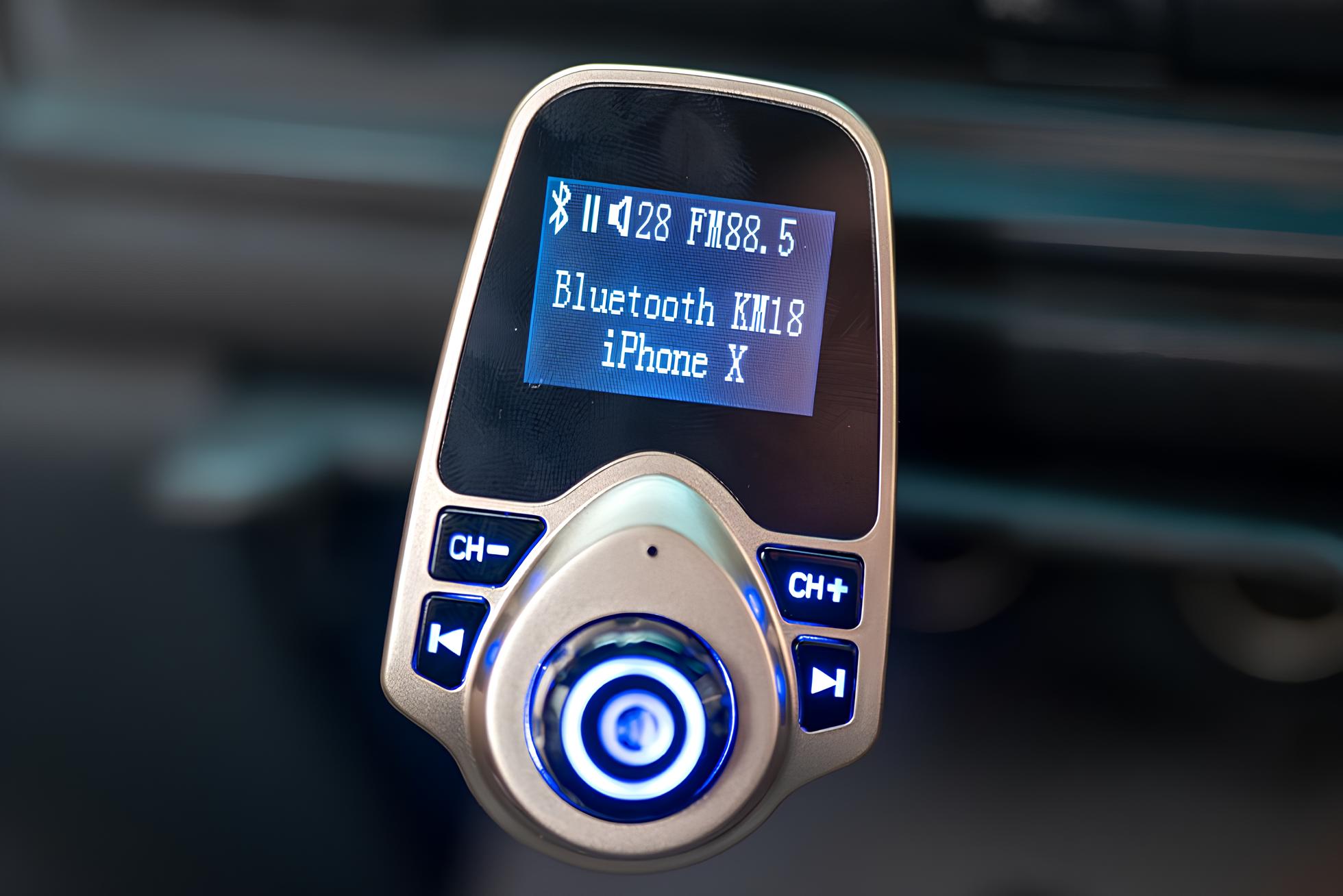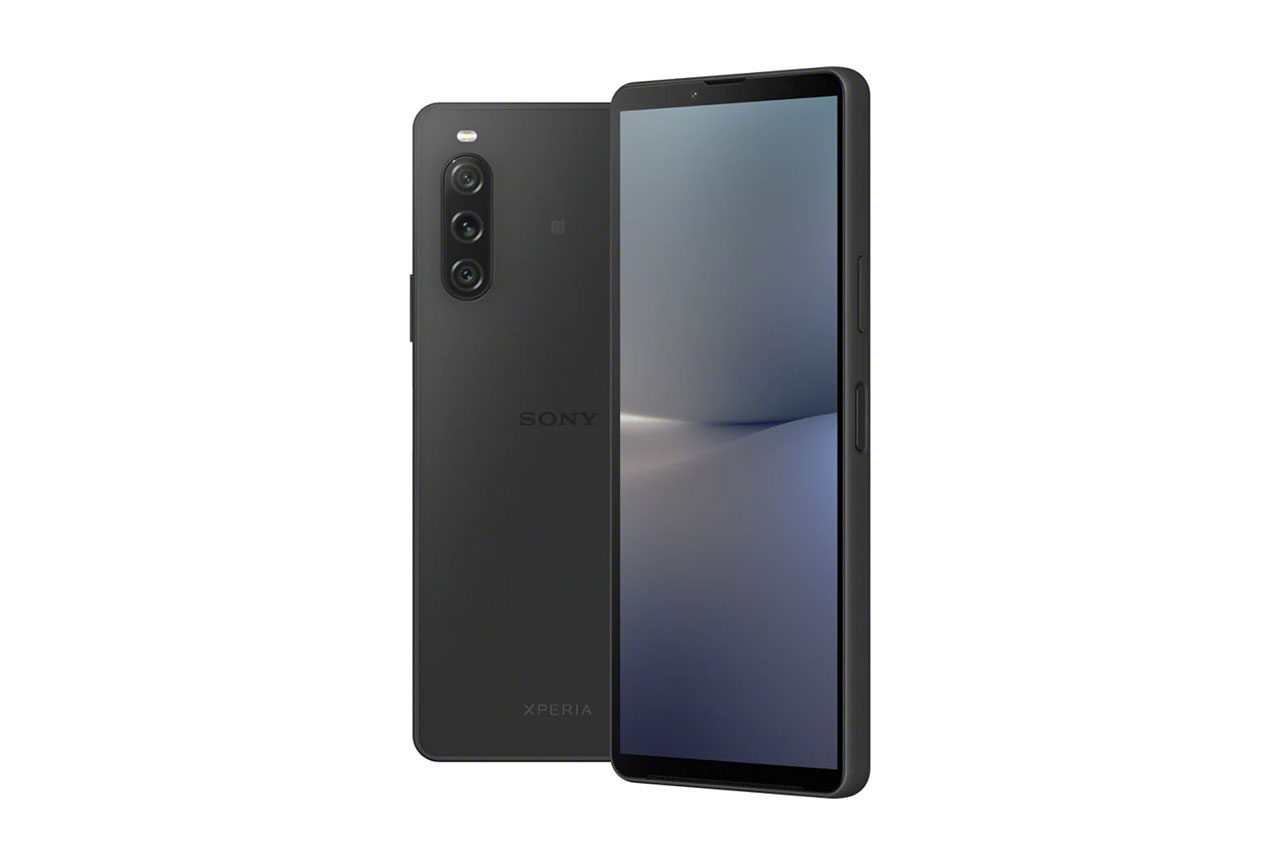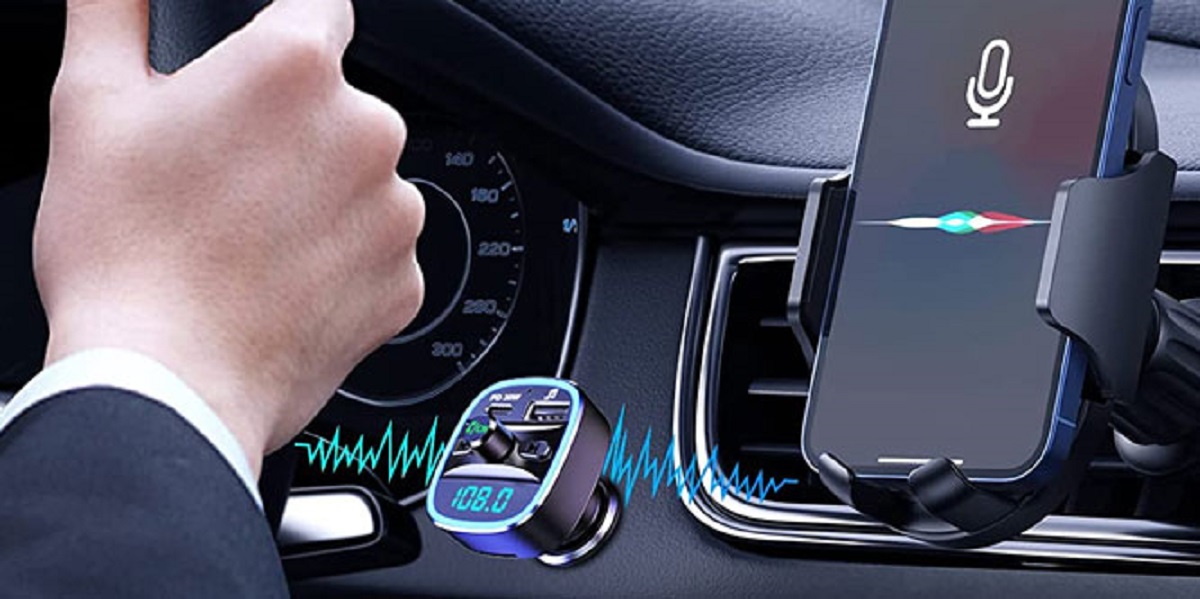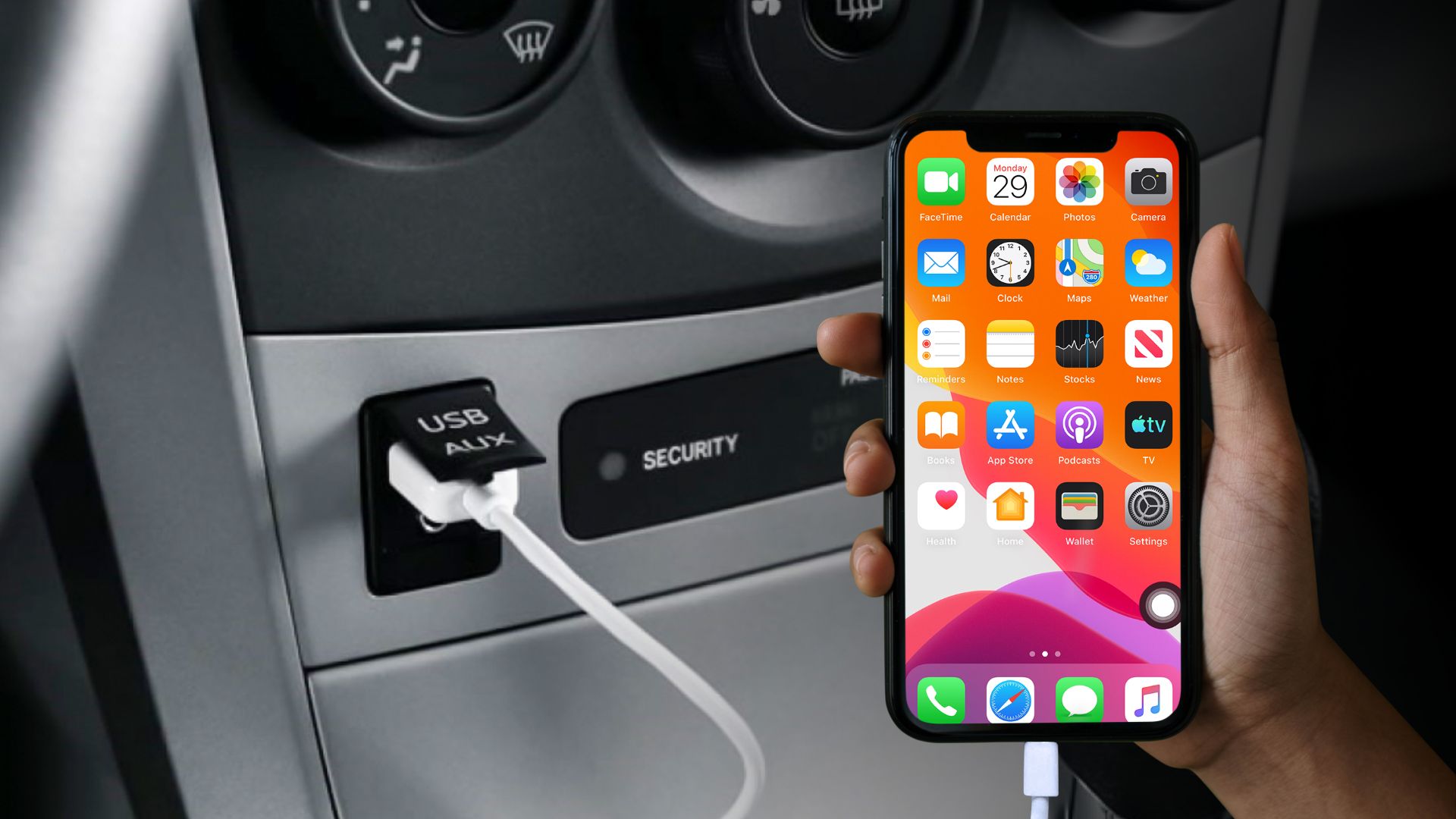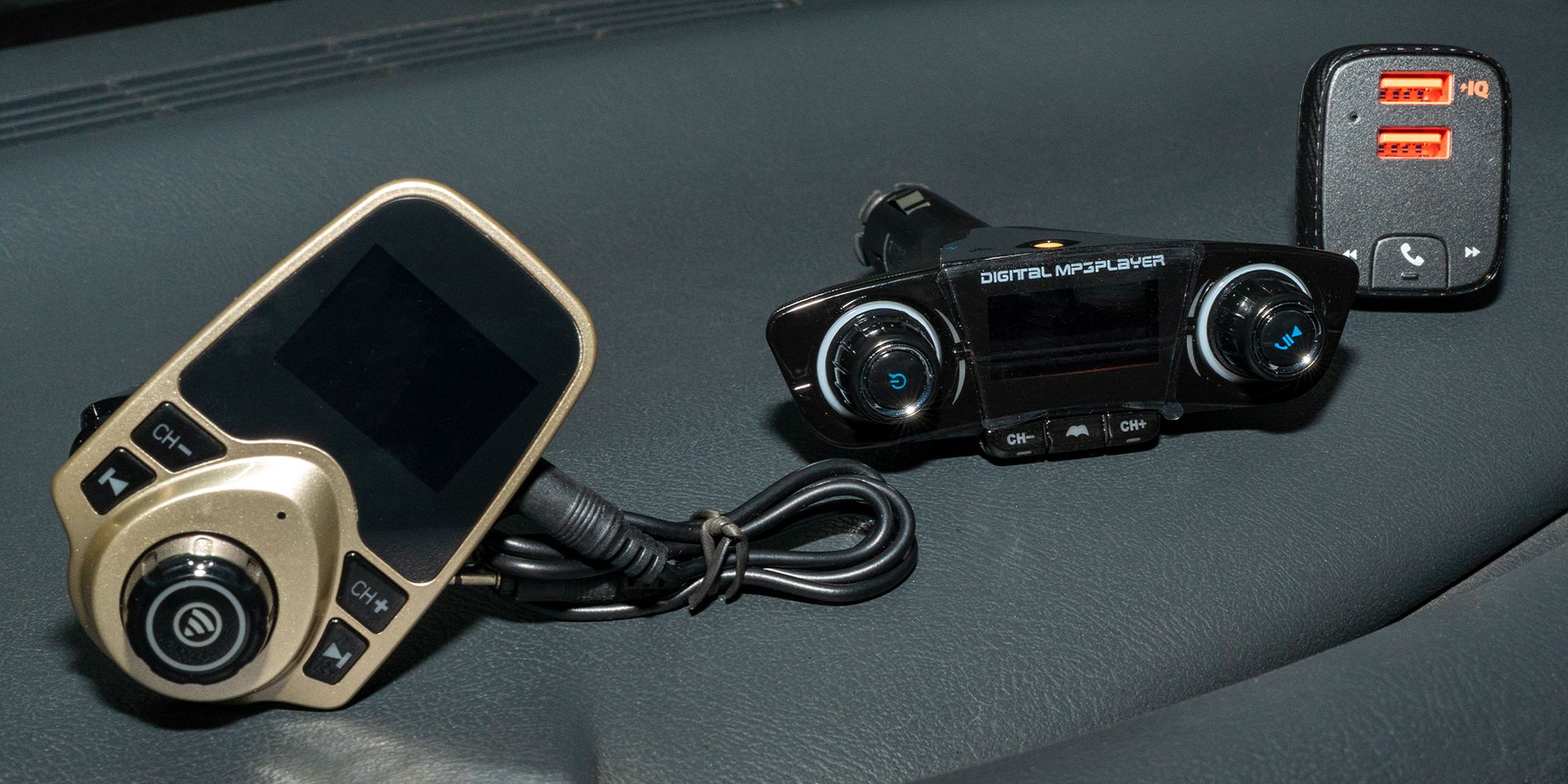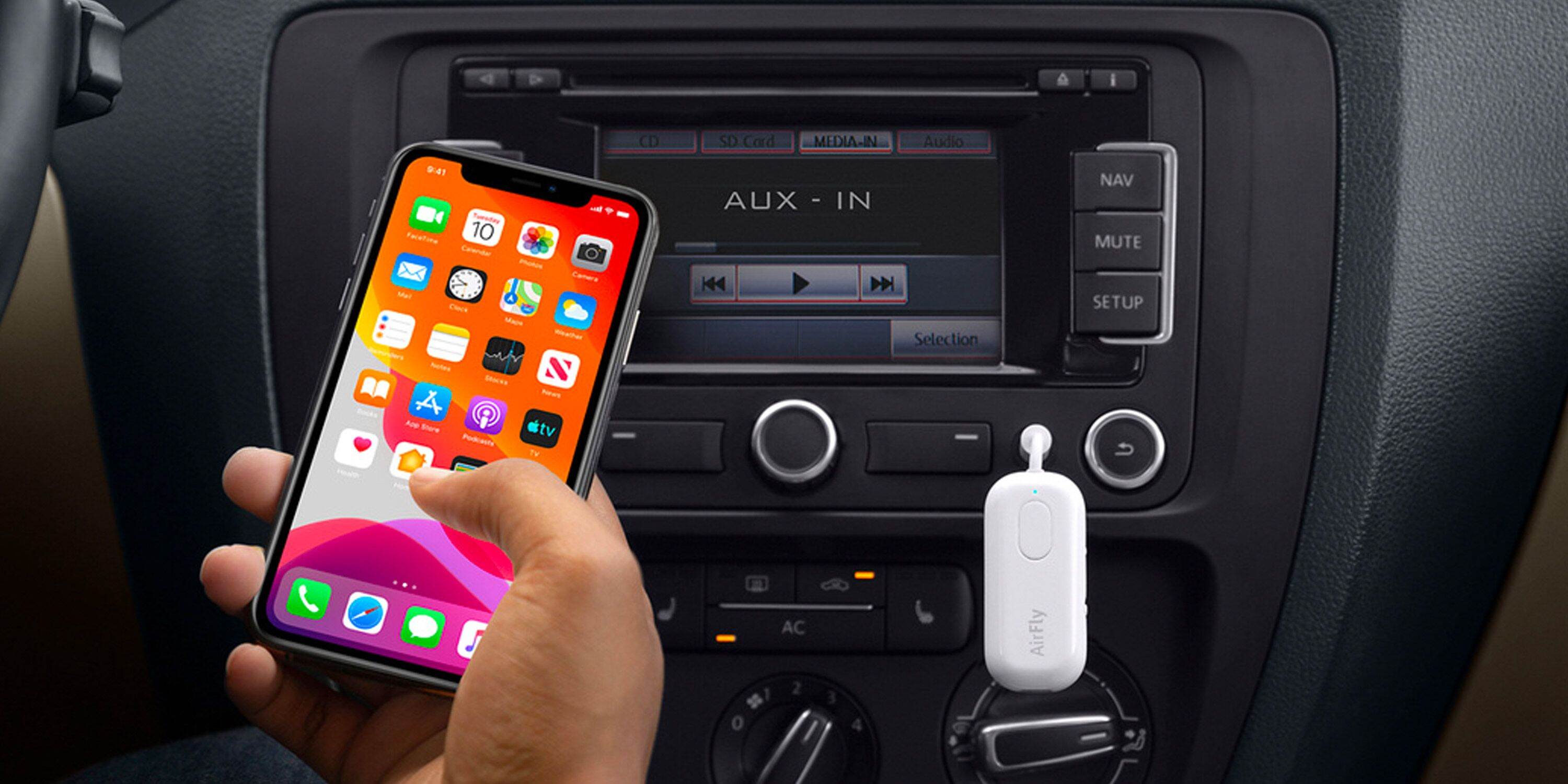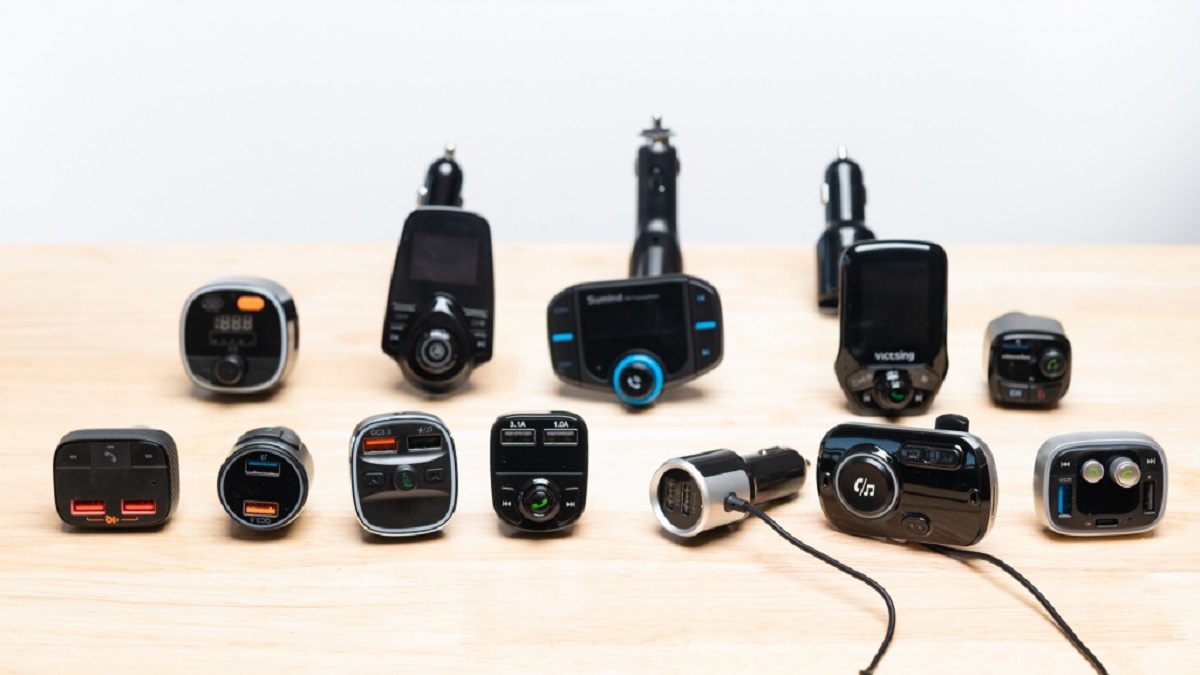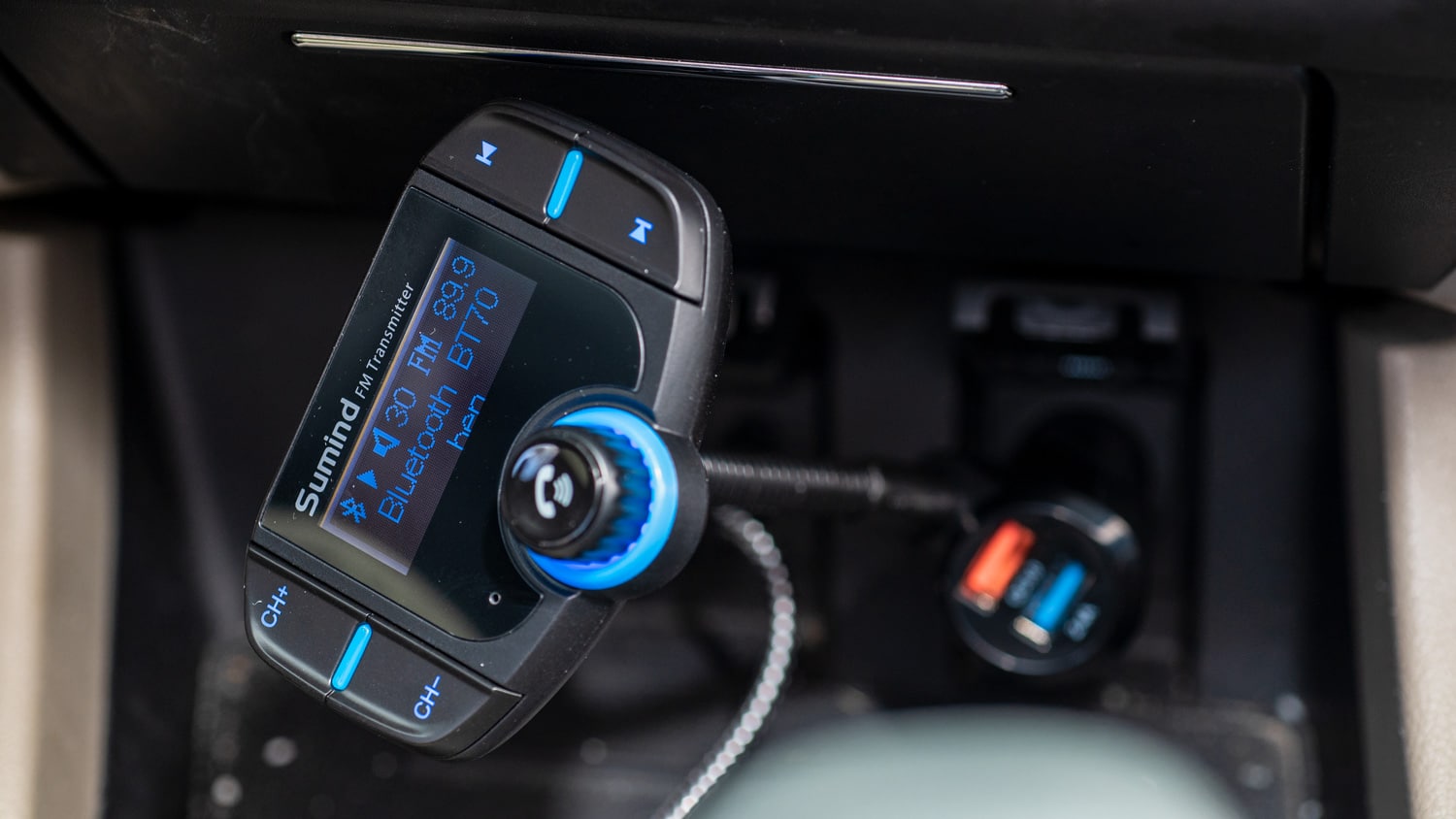Introduction
In the age of smartphones, the iPhone has become an indispensable companion for millions of people worldwide. Its seamless integration with various technologies has revolutionized the way we communicate, work, and entertain ourselves. One such technology that has gained prominence in enhancing the iPhone's functionality is the FM transmitter.
The FM transmitter serves as a bridge between your iPhone and your car's audio system, enabling you to wirelessly stream music, podcasts, and phone calls through your vehicle's speakers. This innovative device has become increasingly popular due to its convenience and versatility, offering a simple solution for individuals seeking seamless connectivity while on the move.
As we delve into the world of FM transmitters and their compatibility with iPhones, it's essential to understand their purpose and the myriad benefits they bring to the table. Whether you're a music enthusiast, a frequent traveler, or someone who values hands-free communication, the integration of an FM transmitter with your iPhone can significantly elevate your overall experience.
Let's explore the intricacies of FM transmitters and unravel the seamless connectivity they offer for iPhone users. Whether you're embarking on a road trip, commuting to work, or simply seeking a hassle-free way to amplify your iPhone's audio output, the FM transmitter holds the key to unlocking a world of wireless possibilities.
What is an FM Transmitter?
An FM transmitter is a compact electronic device designed to broadcast audio signals from a source, such as a smartphone or MP3 player, to an FM radio or stereo system. This technology utilizes the FM radio frequency to wirelessly transmit audio content, allowing users to enjoy their favorite music, podcasts, or phone calls through compatible receivers, such as car stereos or home audio systems.
The functionality of an FM transmitter is rooted in its ability to convert audio signals into radio waves, which can then be picked up by nearby FM radio receivers. This process effectively transforms any FM radio or stereo system into a wireless speaker for the connected audio source, providing a seamless and versatile audio streaming solution.
FM transmitters typically feature a compact and portable design, making them convenient for use in various settings, including vehicles, homes, and outdoor environments. They often utilize standard audio input ports, such as 3.5mm jacks or USB connections, to establish a direct link with the audio source, such as an iPhone.
Furthermore, modern FM transmitters are equipped with advanced features, including Bluetooth connectivity and hands-free calling capabilities, enhancing their functionality and user experience. This evolution has positioned FM transmitters as essential accessories for individuals seeking a wireless and user-friendly audio streaming solution.
In the context of iPhone compatibility, FM transmitters serve as a valuable tool for seamlessly integrating the iPhone with external audio systems, particularly in vehicles. By leveraging the FM transmitter's capabilities, iPhone users can enjoy a hassle-free and wire-free audio experience, eliminating the need for cumbersome cables and connectors.
Overall, the FM transmitter represents a versatile and practical solution for wirelessly transmitting audio content from an iPhone to FM radio receivers and stereo systems. Its compact design, user-friendly operation, and compatibility with a wide range of audio sources make it a valuable addition to the modern tech ecosystem, empowering users to amplify their audio experience with ease and convenience.
Purpose of FM Transmitters for iPhones
FM transmitters play a crucial role in enhancing the functionality of iPhones by providing seamless connectivity to external audio systems, particularly in vehicles. The primary purpose of FM transmitters for iPhones is to facilitate wireless audio streaming, enabling users to enjoy their favorite music, podcasts, and phone calls through compatible FM radio receivers and car stereos.
One of the key purposes of FM transmitters for iPhones is to eliminate the constraints of traditional wired connections. By leveraging the wireless capabilities of FM transmitters, iPhone users can bid farewell to tangled cables and cumbersome adapters, embracing a clutter-free and streamlined audio streaming experience. This wireless convenience not only simplifies the setup process but also enhances the overall user experience, allowing individuals to effortlessly connect their iPhones to a wide array of audio systems without the limitations of physical connections.
Moreover, FM transmitters serve as a versatile solution for individuals seeking to integrate their iPhones with older car models lacking modern connectivity features. By utilizing an FM transmitter, users can bridge the technological gap, transforming their car's FM radio into a wireless audio receiver compatible with their iPhones. This seamless integration empowers individuals to leverage their iPhones' extensive audio libraries and communication capabilities while on the move, without being restricted by outdated audio systems.
Furthermore, the purpose of FM transmitters for iPhones extends to promoting hands-free communication and safe driving practices. With many FM transmitters featuring built-in microphones and Bluetooth connectivity, users can effortlessly make and receive phone calls while keeping their hands on the wheel and their focus on the road. This hands-free functionality not only enhances convenience but also contributes to a safer and more responsible driving experience, aligning with modern regulations and best practices for road safety.
In essence, the purpose of FM transmitters for iPhones revolves around fostering seamless wireless connectivity, simplifying audio integration in older vehicles, and promoting hands-free communication. By embracing the capabilities of FM transmitters, iPhone users can unlock a world of wireless possibilities, amplifying their audio experience and enhancing their on-the-go connectivity with unparalleled convenience and versatility.
Benefits of Using FM Transmitters with iPhones
Enhanced Audio Connectivity: FM transmitters offer iPhone users a seamless and wireless method to connect their devices to a variety of audio systems, including car stereos and home entertainment setups. This enhanced connectivity eliminates the need for physical cables and adapters, providing a clutter-free and user-friendly audio streaming experience. Whether embarking on a road trip or enjoying a leisurely drive, the ability to wirelessly transmit audio from an iPhone to the car's audio system enhances convenience and elevates the overall driving experience.
Versatile Compatibility: FM transmitters are designed to be compatible with a wide range of audio sources, making them an ideal companion for iPhone users seeking flexible connectivity options. Whether streaming music, podcasts, or conducting hands-free calls, the versatile compatibility of FM transmitters ensures that iPhone users can seamlessly integrate their devices with various audio systems, regardless of the make or model. This compatibility extends to older car models that lack modern connectivity features, allowing users to breathe new life into their vehicles' audio setups without the need for extensive modifications.
Seamless Integration: The integration of FM transmitters with iPhones facilitates a seamless and intuitive audio streaming experience, enabling users to effortlessly control their audio playback directly from their devices. With the ability to wirelessly transmit audio content, users can navigate their iPhone's music library, adjust volume levels, and manage incoming calls without the constraints of physical connections. This seamless integration fosters a user-centric approach, empowering individuals to personalize their audio experience while maintaining a focus on convenience and ease of use.
Hands-Free Communication: Many FM transmitters are equipped with built-in microphones and Bluetooth connectivity, allowing iPhone users to engage in hands-free communication while driving. This hands-free functionality not only simplifies the process of making and receiving calls but also contributes to a safer driving environment by promoting responsible and distraction-free communication. By leveraging the hands-free capabilities of FM transmitters, iPhone users can prioritize safety without compromising on their connectivity and communication needs.
Overall, the benefits of using FM transmitters with iPhones encompass enhanced audio connectivity, versatile compatibility, seamless integration, and hands-free communication. By embracing these benefits, iPhone users can elevate their audio streaming experience, seamlessly integrate their devices with various audio systems, and prioritize safety and convenience while on the move.
How to Choose the Right FM Transmitter for Your iPhone
When selecting an FM transmitter for your iPhone, several key factors should be considered to ensure optimal compatibility, performance, and user experience.
1. Compatibility:
Ensure that the FM transmitter is compatible with your iPhone model. Some transmitters are designed specifically for certain iPhone generations or operating systems. Additionally, check for compatibility with other devices you may want to connect, such as iPads or other smartphones.
2. Frequency Range and Stability:
Look for an FM transmitter with a broad frequency range and stable signal transmission. A wider frequency range allows for greater flexibility in finding clear, unused frequencies for transmission, especially in densely populated areas with crowded airwaves. Stable signal transmission minimizes interference and ensures consistent audio quality.
3. Power Source:
Consider the power source of the FM transmitter. Some models are powered by the iPhone's battery, while others require a separate power supply. Battery-powered transmitters may drain the iPhone's battery more quickly, so it's important to assess your usage patterns and choose accordingly.
4. Audio Quality:
Prioritize audio quality when selecting an FM transmitter. Look for features such as noise reduction technology and enhanced signal processing to deliver clear and crisp audio output. Additionally, seek user reviews and expert opinions to gauge the audio performance of different transmitter models.
5. Connectivity Options:
Evaluate the connectivity options offered by the FM transmitter. While most transmitters utilize the headphone jack or Lightning connector on the iPhone, some advanced models feature Bluetooth connectivity, enabling wireless pairing with the iPhone. Bluetooth-enabled transmitters provide added convenience and flexibility, especially for users who prefer a cable-free setup.
6. User-Friendly Interface:
Opt for an FM transmitter with a user-friendly interface and intuitive controls. The ease of navigating through frequency settings, audio playback controls, and call management features contributes to a seamless user experience, particularly during driving or other on-the-go scenarios.
7. Hands-Free Functionality:
Consider whether the FM transmitter offers hands-free calling capabilities. Built-in microphones, voice command support, and call management features enhance the transmitter's utility, allowing users to make and receive calls without compromising safety or convenience.
By carefully evaluating these factors, you can make an informed decision when choosing the right FM transmitter for your iPhone. Prioritizing compatibility, audio quality, connectivity options, and user-friendly features ensures that the selected transmitter seamlessly integrates with your iPhone, enhancing your audio streaming experience and on-the-go connectivity.
Conclusion
In conclusion, the integration of FM transmitters with iPhones represents a transformative approach to audio connectivity, offering users a seamless and wireless solution for streaming music, podcasts, and hands-free calls. The purpose of FM transmitters for iPhones extends beyond mere convenience, encompassing versatile compatibility, enhanced audio integration, and a commitment to safety and user-centric functionality.
By leveraging FM transmitters, iPhone users can transcend the constraints of traditional wired connections, embracing a clutter-free and intuitive audio streaming experience. Whether embarking on a road trip, commuting to work, or simply enjoying leisure time at home, the ability to wirelessly transmit audio content from an iPhone to various receivers empowers individuals to personalize their audio experience with unparalleled convenience.
Furthermore, the benefits of using FM transmitters with iPhones are underscored by their versatile compatibility, enabling seamless integration with a diverse range of audio systems. This compatibility extends to older car models, bridging the technological gap and breathing new life into outdated audio setups, thereby enhancing the overall driving and entertainment experience.
The hands-free communication capabilities of FM transmitters further reinforce their significance, promoting responsible and distraction-free communication while on the move. By prioritizing safety and convenience, FM transmitters empower iPhone users to engage in hands-free calls without compromising their focus on the road, aligning with modern regulations and best practices for road safety.
When selecting an FM transmitter for an iPhone, considerations such as compatibility, frequency range, power source, audio quality, connectivity options, user-friendly interface, and hands-free functionality play a pivotal role in ensuring an optimal user experience. By carefully evaluating these factors, individuals can make informed decisions, aligning the chosen transmitter with their specific usage patterns and connectivity preferences.
In essence, the integration of FM transmitters with iPhones heralds a new era of wireless audio connectivity, offering a harmonious blend of convenience, versatility, and safety. Whether navigating bustling city streets or embarking on scenic road trips, the seamless connectivity facilitated by FM transmitters empowers iPhone users to amplify their audio experience with unparalleled ease and flexibility, setting the stage for a future where wireless connectivity reigns supreme.







